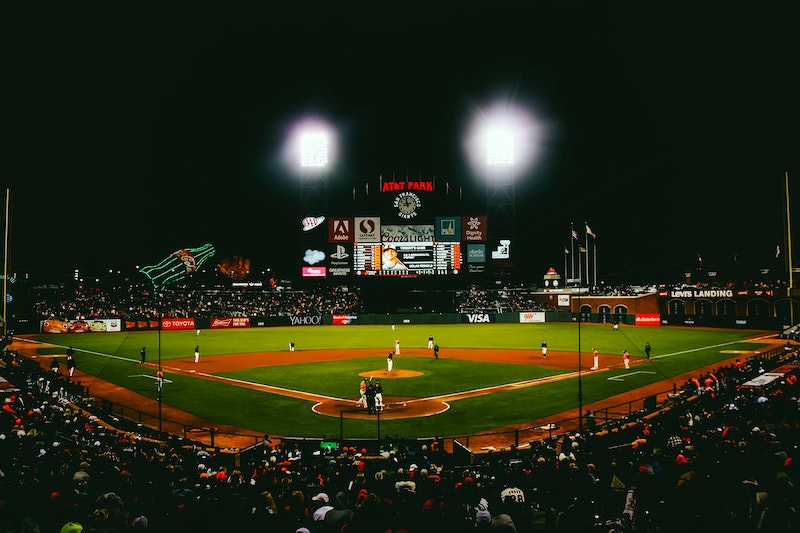The Size Differences Between MLB Baseball Fields

Baseball is a game of inches, and the size of the field can have a major impact on the way the game is played. In Major League Baseball (MLB), there is a significant amount of variation in field dimensions across the league. This can affect the types of hits that are possible and the likelihood of home runs being hit.
The Basics
The dimensions of a baseball field are standardized in some respects. The distance between home plate and the pitcher’s mound is always 60 feet, 6 inches. The bases are always 90 feet apart. However, the dimensions of the outfield can vary.
The Effect of Field Dimensions
The size of the outfield can have a major impact on the game. A larger outfield makes it more difficult for hitters to hit home runs, while a smaller outfield makes it easier. This can affect the strategy of the game, as teams may want to build a field that gives them an advantage over their opponents.
Examples of Hitter-Friendly and Pitcher-Friendly Parks
Some MLB parks are known for being more hitter-friendly than others. These parks typically have smaller outfields, which makes it easier for hitters to hit home runs. Some examples of hitter-friendly parks include Coors Field in Denver, Rogers Centre in Toronto, and Fenway Park in Boston.
Other MLB parks are known for being more pitcher-friendly than others. These parks typically have larger outfields, which makes it more difficult for hitters to hit home runs. Some examples of pitcher-friendly parks include Yankee Stadium in New York, Target Field in Minneapolis, and Petco Park in San Diego.
Here is a table of the size differences between all 30 MLB baseball fields:
| Team | Left Field | Center Field | Right Field |
|---|---|---|---|
| Arizona Diamondbacks | 330 | 407 | 335 |
| Atlanta Braves | 325 | 404 | 328 |
| Baltimore Orioles | 337 | 406 | 320 |
| Boston Red Sox | 310 | 420 | 302 |
| Chicago Cubs | 355 | 400 | 350 |
| Chicago White Sox | 330 | 400 | 335 |
| Cincinnati Reds | 325 | 404 | 328 |
| Cleveland Guardians | 335 | 410 | 330 |
| Colorado Rockies | 347 | 415 | 350 |
| Detroit Tigers | 345 | 420 | 330 |
| Houston Astros | 315 | 435 | 326 |
| Kansas City Royals | 330 | 400 | 330 |
| Los Angeles Angels | 330 | 396 | 330 |
| Los Angeles Dodgers | 330 | 400 | 300 |
| Miami Marlins | 340 | 420 | 335 |
| Milwaukee Brewers | 332 | 400 | 325 |
| Minnesota Twins | 330 | 400 | 330 |
| New York Mets | 335 | 405 | 330 |
| New York Yankees | 314 | 421 | 325 |
| Oakland Athletics | 325 | 400 | 325 |
| Philadelphia Phillies | 330 | 401 | 329 |
| Pittsburgh Pirates | 322 | 409 | 325 |
| San Diego Padres | 336 | 396 | 322 |
| San Francisco Giants | 339 | 399 | 309 |
| Seattle Mariners | 330 | 410 | 330 |
| Tampa Bay Rays | 335 | 404 | 330 |
| Texas Rangers | 329 | 407 | 326 |
| Toronto Blue Jays | 330 | 400 | 330 |
| Washington Nationals | 336 | 403 | 335 |
The Future of Field Dimensions
It is unlikely that the size of baseball fields will change significantly in the future. However, it is possible that we will see more variation in field dimensions, as teams look for ways to gain an advantage over their opponents.
Conclusion
The size of a baseball field is an important part of the game. It can affect the types of hits that are possible and the likelihood of home runs being hit. This can have a major impact on the strategy of the game, as teams may want to build a field that gives them an advantage over their opponents.
The size of a baseball field is ultimately determined by the home team, who can choose to build their stadium to their liking. This can be a strategic decision, as teams may want to build a field that gives them an advantage over their opponents. For example, a team with a lot of power hitters might want to build a field with a large outfield, while a team with a lot of good pitchers might want to build a field with a short porch.
The size of a baseball field can also be affected by the surrounding environment. For example, a field that is built in a city might have to be smaller than a field that is built in a rural area. This is because there is less space available in a city, and there are more factors to consider, such as traffic and noise.
Overall, the size of a baseball field is a complex issue that is influenced by a variety of factors. It is an important part of the game, and it can have a major impact on the way the game is played.
